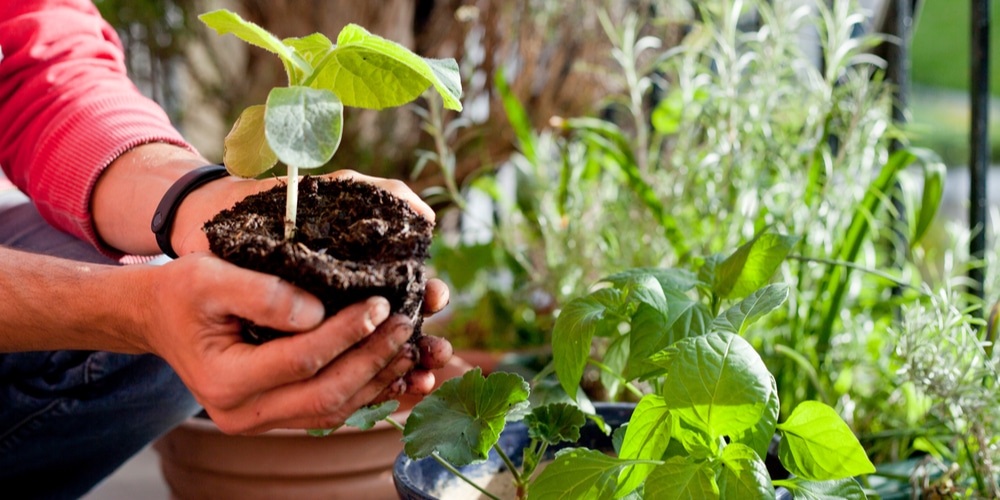There’s nothing more disappointing than planting a cucumber seed, watching it germinate, and grow into a strong, large and healthy plant, only to find that it produces no fruit.
While you’ve grown a lovely cucumber plant, it’s not doing what you wanted it to do – produce cucumbers! So, what’s wrong?
You’re not alone in this cucumber conundrum. Many gardeners have experienced the same thing. If you’re wondering why your cucumber plant has no cucumbers, here are a few possible explanations.
Reasons Why Your Huge Cucumber Plant Doesn’t Produce Fruits

You take pride in your cucumber plant. It’s the biggest one in the neighborhood. But no matter how much love and attention you give it, your cucumber plant just doesn’t seem to produce any fruit. Here are some reasons why:
It’s a Male Plant
Cucumbers, like other plants, have male and female parts. The male part produces pollen, and the female part produces the ovules fertilized by the pollen to become cucumbers. If your cucumber plant is all leaves and no fruit, it’s probably a male plant. Male cucumber plants are often culled by commercial growers because they don’t produce fruit.
This can be easily fixed by getting a female cucumber plant. You can tell if a cucumber plant is male or female by looking at the flowers. Male flowers grow on thin stems and have pollen-laden anthers in the center of the flower. On the other hand, female flowers have ovaries in the center that will eventually become cucumbers.
Too Much Shade
Cucumbers need at least six hours of direct sunlight to produce fruit. If your cucumber plant is in a shady spot, it might explain why it’s not producing any cucumbers. Uprooting your cucumber plant and moving it to a sunnier spot might do the trick.
When doing so, take care not to damage the roots. Try to replant it on the same day to minimize stress on the plant.
It’s Not Getting Enough Water
Cucumbers are 90% water, so they need to be kept hydrated. Cucumbers need about an inch of water per week, especially when the fruits are starting to form. If your cucumber plant is not getting enough water, it will wilt, and the leaves will turn yellow. The plant will eventually die if it doesn’t get enough water.
Make sure to water your cucumber plant deeply and regularly. Check the soil before watering to see if it’s dry. If it is, give your plant a good soaking.
It Might Be Overwatered
While cucumbers need a lot of water, too much water can also be a problem. If the soil is constantly wet, it will cause the roots to rot. This will kill the plant, slowly, until there’s nothing left.
Check the soil before watering if you think your cucumber plant is being overwatered. If it’s already wet, don’t water it again. Let the soil dry out a bit before watering again. You can also try to improve drainage by adding some organic matter to the soil. This will help absorb excess water.
It’s Too Hot or Too Cold
Temperature plays a crucial role in cucumber production. Cucumbers need warm weather to grow and produce fruit. They can’t tolerate frost, and they don’t do well in temperatures below 50 degrees Fahrenheit. If the temperature is too hot or too cold, your cucumber plant will not produce fruit.
The best temperature for cucumber growth is between 70 and 95 degrees Fahrenheit. If the temperature is outside this range, it will affect cucumber production.
There are a few things you can do to fix this problem. If it’s too cold, you can try using a floating row cover or plastic mulch to warm up the soil. If it’s too hot, you can try shading the plant with a piece of cloth or covering it with a row cover.
Poor Soil Quality
Cucumbers need well-drained, nutrient-rich soil to grow and produce fruit. If the soil is too sandy or clayey, it will affect cucumber production. The ideal soil for cucumbers is a mix of sand, silt, and clay.
To improve the quality of your soil, you can add some organic matter to it. This will help improve drainage and add nutrients to the soil. You can also try using a raised bed or container to plant your cucumbers. This will provide them with well-drained, nutrient-rich soil.
Pests and Diseases
Cucumbers are susceptible to pests and diseases that can affect their growth and production. Common cucumber pests include aphids, cucumber beetles, and whiteflies. Common diseases include downy mildew and powdery mildew.
If your cucumber plant is infested with pests or diseases, it will not produce fruit. You can try to control pests and diseases by using pesticides or fungicides. You can also try to remove affected leaves or stems.
Incorrect Fertilizer
Over-fertilizing or fertilizing with the wrong type of fertilizer can also cause cucumber plants to produce fewer fruits. Too much fertilizer can overwhelm the plant and prevent it from having fruits. Check the plant’s nitrogen levels before fertilizing. If the levels are too high, don’t fertilize the plant.
You can use a variety of fertilizers to fertilize cucumber plants. The best fertilizer for cucumbers is a balanced, all-purpose fertilizer. You can also use compost or manure to add nutrients to the soil.
Cucumber plant huge but no cucumbers: Final Thoughts
There is no direct correlation between your cucumber plant’s size and the number of fruits it produces. The size of the plant has no bearing on cucumber production. However, there are a few factors that can affect cucumber production. These include water, temperature, soil quality, pests and diseases, and fertilizer.
If you’re having trouble getting your cucumber plant to produce fruit, make sure to check these factors. By correcting these problems, you should be able to get your cucumber plant to produce fruit.
